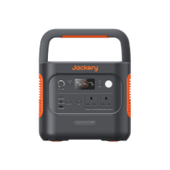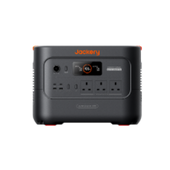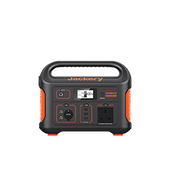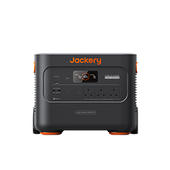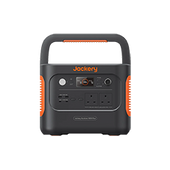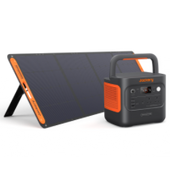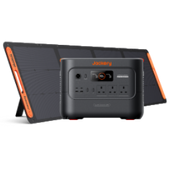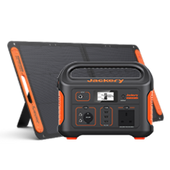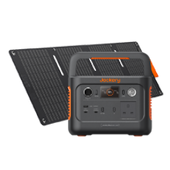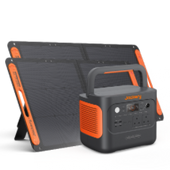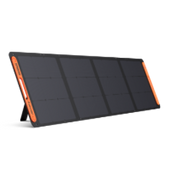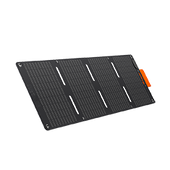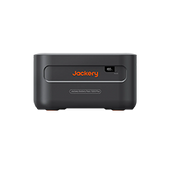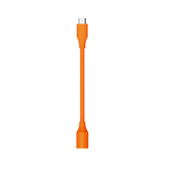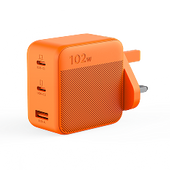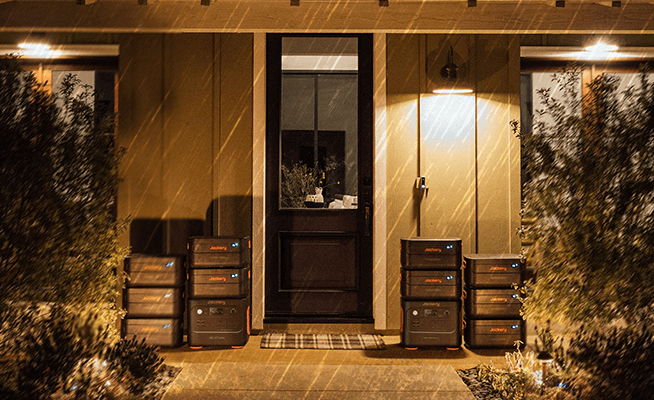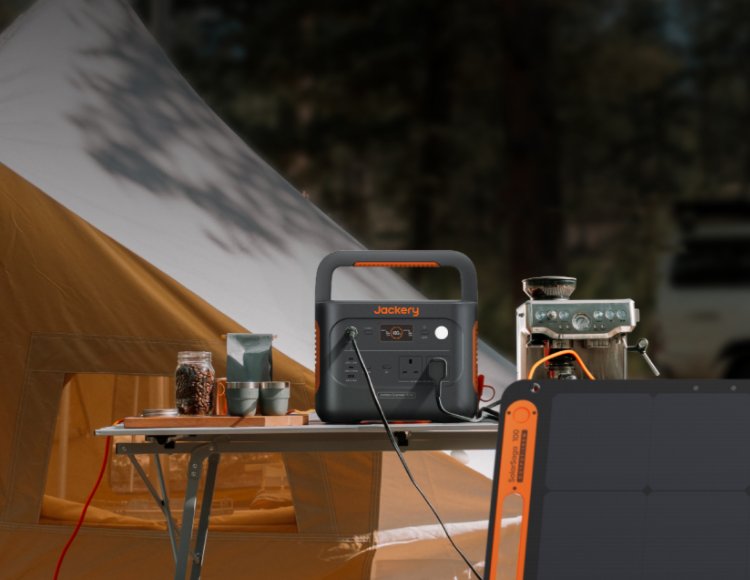Energy measurement is critical in both domestic and industrial settings. Understanding units such as kilowatt-hours (kWh) and megawatt-hours (MWh) is essential for effective energy management and cost estimation. Kilowatt-hours are often used to describe smaller-scale energy consumption, such as power consumption in a home or small device.
Megawatt-hours, on the other hand, are suitable for measuring the energy output of large power systems, industrial facilities, or new energy projects. In addition, knowing how to convert kWh to MWh means you have one more tool to help you stay on top of your energy usage.
This blog provides a comprehensive introduction to kilowatt-hours (kWh) and megawatt-hours (MWh), along with guidance on converting between these units.
|
Key Takeaways: |
|
● The kilowatt-hour (kWh) is a unit of measurement for energy, widely used in household, industrial, and commercial areas. ● A megawatt-hour (MWh) is typically used to measure the consumption or production of large amounts of electricity in operations such as factories or urban power supply systems. ● To convert kWh to MWh, divide the original value by 1000. ● The conversion of kWh to MWh is often required in electricity trading, industrial and commercial electricity consumption, regional electricity aggregation, and the generation scale of renewable energy projects. ● The importance of converting kWh to MWh is primarily reflected in the unification of industry standards, the simplification of expressing large values, and the basis for evaluating renewable energy. ● We highly recommend the Jackery Portable Power Stations, which offer higher kWh ratings to power household appliances and outdoor devices effectively. |
Basic Information of kWh
Kilowatt-hour (kWh) is a unit of energy measurement that originated from the metering needs of the power system. It is a standard unit of measurement for electricity consumption and is widely used in households, industries and commercial fields. For example, electricity suppliers often use it to measure energy usage.
It represents the energy consumed by a device with a power of 1 kilowatt (kW) for 1 hour. For example, a 1000-watt (W) electric water heater consumes 1 kWh of energy when it runs for 1 hour.
How to Calculate kWh?
kWh is the product of power (work done per unit time) and time. Among them, power is measured in kilowatts, and time is measured in hours. Therefore, you can calculate kWh with the following formula:
Kilowatt-hour (kWh) = Power (kW) × Time (h)
Example: A 50W light bulb works for 10 hours.
Kilowatt-hour (kWh) = 0.05kW × 10h = 0.5kWh
Please note that the calculation should be consistent with the unit to avoid errors caused by a mismatch between power and time units. For multi-device or variable power scenarios, the kWh consumed in each period should be calculated separately and then accumulated over time.
Application Scenarios of kWh
The following are some common application scenarios of kilowatt-hour (kWh):
Electricity Billing and Statistics: Household and business electricity bills are based on kWh measurement (such as 200kWh consumed per month). Electricity suppliers use the user's total electricity consumption (in accumulated kilowatt-hours) as the basis for charging.
Electric Appliance Energy Efficiency Labelling: Understanding kWh consumption is essential for evaluating the energy efficiency of appliances (for example, a refrigerator consumes approximately 200 kWh per year) and making informed decisions about energy use.
Energy Management and Energy Saving: kWh is often used to measure the energy consumption of machines, production lines or buildings to guide the setting and implementation of energy-saving measures.
Renewable Energy: The power generation from renewable energy sources, such as solar systems and wind turbines, is typically measured in kWh. For example, a photovoltaic panel generates 5 kWh per day.
What Can 1 kWh of Electricity Do?
1 kWh of electricity can be used for a wide range of purposes, depending on the device's power requirements. Here are some common examples of 1 kWh of electricity in life:
Lighting: It can power a 10-watt LED lamp for 100 hours or illuminate 100 10-watt bulbs for 1 hour.
Home Appliance Operation: It can power an ordinary refrigerator for about 24 hours, a fan (50W) for 20 hours, or a laptop (about 50W) for about 20 hours.
High-Power Consumption Equipment: It can power a 2000-watt hair dryer for 30 minutes, or an oven for baking multiple servings of food.
Modern Applications: It can charge a smartphone approximately 100 times or power an electric car for approximately 3-5 kilometres (depending on the vehicle model's energy efficiency).
Environmental Protection: 1 kWh of electricity is equivalent to reducing carbon emissions by about 0.3-0.5 kg (depending on the power generation method).

Basic Information of MWh
Megawatt-hour (MWh) is a unit of measurement used to quantify the amount of electricity generated over a specific period. It is often used to measure the consumption or production of large amounts of electricity in larger operations such as factories or city power supplies. MWh represents the amount of energy consumed or produced by running 1 megawatt (MW) of power for 1 hour.
How to Calculate MWh?
As with kWh, calculating MWh requires knowing the power (work done per unit time) and the time it takes to complete the task. Therefore, you can calculate MWh using the following formula:
MWh = Power (MW) × Time (h)
Example: A 2 MW wind turbine runs for 5 hours.
MWh = 2 MW × 5 h = 10 MWh
Note that MWh is more commonly used as a unit of measurement for large sites such as commercial buildings, utility companies, solar farms, or for reporting national energy data.
Application Scenarios of MWh
Here are some common application scenarios of megawatt-hours (MWh):
Power System Planning and Evaluation: This is often used by power suppliers to measure the capacity of power plants (such as 50 MWh of annual power generation) and evaluate the balance between supply and demand in the power grid.
Energy Efficiency Analysis: Enterprises or large commercial buildings (such as office buildings or shopping malls) can optimise power consumption strategies and reduce energy costs by comparing MWh consumption in different periods.
Renewable Energy Management: In areas such as solar and wind power generation, it is often used to quantify the capacity of energy storage systems (such as batteries that can store 10 MWh of electricity) to help regulate fluctuations in intermittent energy supplies.
What Can 1 MWh of Electricity Do?
1 MWh of electricity has significant practical value, and its application scenarios cover people's livelihood, industry and technology:
Household Electricity: It can be used by approximately 1,000 ordinary households (assuming an average power of 1 kilowatt per household) to operate air conditioning, lighting, home appliances, and other equipment simultaneously within one hour.
Electric Vehicles: A Tesla Model 3 (with a battery capacity of approximately 75 kWh) can be charged about 13 times, supporting its driving range of roughly 6,500 kilometres.
Industrial Production: It can support the production of about 1 ton of aluminium or 0.5 tons of steel.
Emergency and Disaster Relief: It can ensure a continuous power supply for emergency communication base stations or shelters for several hours, ensuring the operation of key facilities.
How to Convert kWh to MWh?
In energy management, power engineering, or daily electricity statistics, kilowatt-hours (kWh) and megawatt-hours (MWh) are standard units of measurement. kWh is typically used to measure the electricity consumption of smaller-scale entities, such as households or small businesses.
MWh is suitable for larger-scale energy statistics, such as power plant output and urban grid supply. Understanding the conversion relationship between the two will help accurately analyse and compare data in different scenarios.

How to Convert kWh to MWh?
The following content outlines the process of converting kilowatt-hours (kWh) to megawatt-hours (MWh).
Step 1: Understand the Unit Relationship
1 megawatt (MW) is equal to 1000 kilowatts (kW). Similarly, 1 megawatt-hour (MWh) is equal to 101000 kilowatt-hours (kWh). Therefore, MWh is a larger unit of energy.
Step 2: Determine the Conversion Formula
According to the unit relationship between kWh and MWh, to convert kWh to MWh, divide the original value by 1000. Therefore, the formula for converting kWh to MWh is
MWh = kWh ÷ 1,000
Example: Suppose a factory uses 20,000 kWh of electricity in a week and needs to convert to MWh.
MWh = 20,000kWh ÷ 1,000 = 20MWh
Note: If other units such as watt-hours and gigawatt-hours are involved, the basis must be unified before conversion. For example, 1 gigawatt-hour (TWh) = 1,000 MWh = 1,000,000 kWh.
In addition, in actual work, you can use a calculator, an Excel formula (such as "=A1*1000") or an online unit conversion tool to complete the conversion from kWh to MWh quickly. However, you must manually verify the results to ensure accuracy.
To help people convert kilowatt-hours (kWh) to megawatt-hours (MWh) more quickly, you can refer to the following reference chart:
|
Kilowatt-hours |
Megawatt-hours |
|
1 kWh |
0.001 MWh |
|
2 kWh |
0.002 MWh |
|
5 kWh |
0.005 MWh |
|
10 kWh |
0.01 MWh |
|
20 kWh |
0.02 MWh |
|
30 kWh |
0.03 MWh |
|
40 kWh |
0.04 MWh |
|
50 kWh |
0.05 MWh |
|
60 kWh |
0.06 MWh |
|
70 kWh |
0.07 MWh |
|
80 kWh |
0.08 MWh |
|
90 kWh |
0.09 MWh |
|
100 kWh |
0.1 MWh |
|
200 kWh |
0.2 MWh |
|
500 kWh |
0.5 MWh |
|
1000 kWh |
1 MWh |
How to Convert MWh to kWh?
The following content provides a detailed explanation of how to convert megawatt-hours (MWh) to kilowatt-hours (kWh).
Just like converting kilowatt-hours (kWh) to megawatt-hours (MWh), converting MWh to kWh still needs to follow the relationship of 1 megawatt-hour (MWh) = 1000 kilowatt-hours (kWh). According to the unit relationship between kWh and MWh, to convert MWh to kWh, you need to multiply the original value by 1000. Therefore, the formula for converting MWh to kWh is:
kWh = MWh × 1,000
Example: Assume that a solar power plant generates 2.5 MWh of electricity per day, which needs to be converted to kWh.
Kilowatt-hour (kWh) = 2.5 MWh × 1,000 = 2500kWh
Practical Application of kWh to MWh Conversion
Converting kilowatt-hours (kWh) to megawatt-hours (MWh) is a common practice in practical applications, particularly in energy management, the power industry, and large-scale facility operations. The following are specific application scenarios and examples of converting kWh to MWh:

Power Generation and Power Trading
The power generation of power plants (such as coal-fired, wind power, and photovoltaic power plants) is usually measured in megawatt-hours (MWh). For example, a wind farm generates 50,000 kWh per day, which is converted to 50 MWh for settlement with the grid.
Generators need to quote in MWh to participate in the market. Additionally, in energy trading, megawatt-hours are the standard unit of measurement. For example, a power transaction volume of 200,000 kWh is directly marked as 200 MWh in the contract.
Industrial and Commercial Electricity
The daily electricity usage of small and medium-sized enterprises is typically measured in kilowatt-hours (kWh), but converting it to megawatt-hours in monthly or annual summaries makes it easier to compare industry benchmarks or set energy-saving goals. For example, a manufacturing plant that consumes 500,000 kWh of power each month will be transformed to 500 MWh.
Electricity suppliers typically specify rates in tiered MWh, and businesses must translate the cumulative kWh data into MWh to calculate the overall cost. For example, if a commercial building's quarterly electricity consumption exceeds 1.2 million kWh (or 1,200 MWh), a favourable electricity pricing might be arranged with the power supply department.
Regional Electricity Consumption Summary
Government departments or energy companies need to summarise the total electricity consumption of regions or enterprises from kWh to MWh to analyse energy consumption trends or formulate supply plans.
Although household electricity consumption is kWh per household, the total electricity consumption of the city needs to be converted into MWh. For example, 1 million households in a city consume an average of 300 kWh per month, resulting in a total annual electricity consumption of 300,000 MWh.
Loss Management of Power Grids and Infrastructure
The impact assessment of power grid failures requires rapid conversion of kWh-level load losses in local power outage areas into MWh and coordination of backup power dispatch. For example, a sudden power outage in an industrial area resulted in a 100,000 kW load interruption within 2 hours, equivalent to a loss of 20 MWh, necessitating the activation of an emergency plan.
The Scale of Power Generation of Renewable Energy Projects
Megawatt-hours are commonly used to measure the annual power generation of projects such as photovoltaic power plants and wind farms, making it easier to evaluate their production capacity and contribution to the power system. The installed capacity of solar power plants is measured in megawatts (MW), but actual power generation must be converted into megawatt-hours based on operating time.
For example, a 10 MW photovoltaic plant generates approximately 1.2 million kWh (1,200 MWh) of electricity annually, sufficient to power tens of thousands of homes. Government subsidies for renewable energy are frequently based on megawatt-hours of electricity generation. Each 1 MWh of clean electricity reduces around 0.5 tonnes of CO₂ emissions, making environmental data easier to track.
Why Do You Need to Convert kWh to MWh?
Although both essentially measure the consumption or production of electrical energy, converting kilowatt-hours (kWh) to megawatt-hours (MWh) is not a simple numerical conversion, but rather a critical requirement involving energy management, data analysis, policy-making, and sustainable development. The importance of converting kWh to MWh is mainly reflected in the following aspects:

Unified Industry Standards
The megawatt-hour (MWh) is a standard unit in international energy markets (such as power trading and grid operation). Many energy reports, contracts, and regulations (such as carbon emission calculations) specify the use of MWh.
For example, when governments, energy organisations, or businesses need to aggregate energy consumption data at multiple levels, converting scattered kWh data to MWh can help eliminate unit misunderstandings and simplify cross-regional and cross-industry comparisons and analyses.
Simplify the Expression and Management of Large Numbers
The volume of data in the energy industry is vast. For example, a large power plant's annual power generation could be hundreds of millions of kWh; therefore, utilising kWh directly would provide a high number. After converting to MWh (100,000 MWh), the value becomes more compact and straightforward to record, analyse, and explain.
Basis for Renewable Energy Assessment
Megawatt-hours are used as units to demonstrate the economic and environmental benefits of renewable energy initiatives. A 100 MW photovoltaic power station, for example, can create millions of megawatt-hours of electricity annually. Investors use this indicator to determine the payback period, and the government aims to modify the energy structure accordingly. If simply kilowatt-hours are consumed, the data will be insufficient to inform strategic decision-making.
Auxiliary Carbon Emission Accounting
Megawatt-hour, as an internationally accepted unit of energy, is a key parameter for calculating carbon emissions. For example, every megawatt-hour (MWh) of electricity consumed corresponds to a specific amount of carbon dioxide emissions. Converting scattered kilowatt-hour data into megawatt-hours can provide a more accurate estimate of a country's or company's carbon footprint.
Jackery Portable Power Stations Explained
The kWh rating indicates the amount of energy the power station can store. This is the primary factor in determining how long it can power your devices. Before buying a Jackery, you need to assess the power consumption (in Watts) of the devices you plan to use and for how long.
If you only need to charge a phone a few times, a smaller Jackery with a lower Wh capacity (e.g., Explorer 240 v2 or 300 Plus) might suffice. However, suppose you plan to run a mini-fridge, a CPAP machine, or multiple devices for an extended period. In that case, you'll need a much larger unit (e.g., the Explorer 1000 v2, 2000 v2, or even the Plus series with expandable kWh capacity).
Jackery Explorer 2000 v2
The Jackery Explorer 2000 v2 represents a significant evolution in portable power stations, offering robust power capabilities in a more compact and user-friendly package. It's built for those who need reliable off-grid power for everything from extended camping trips and RV adventures to emergency home backup and professional outdoor work.

2042Wh Capacity: This large battery capacity enables it to power a wide range of devices for extended periods, from small electronics to more power-hungry appliances, such as refrigerators, power tools, and even portable air conditioners.
2200W Output (4400W Peak): With a continuous output of 2200W and a peak surge of 4400W, it can handle most common household and outdoor appliances, including those with high startup power demands.
Long Lifespan: Unlike older battery chemistries, the Explorer 2000 v2 utilises LiFePO4 (Lithium Iron Phosphate) battery cells, which offer an impressive lifespan of 4000 charge cycles to 70%+ capacity. This translates to over a decade of daily use, making it a very durable and long-term investment.
Portability Focus: Jackery has focused on making this 2kWh power station remarkably smaller and lighter than its competitors in the same class. Weighing around 38.6 lbs (17.5 kg) and featuring a foldable handle, it's designed for easier transport and storage, whether you're taking it to a remote campsite or moving it around your home for backup.
Uninterruptible Power Supply (UPS): With a rapid 20ms (milliseconds) automatic switchover time, the Explorer 2000 v2 can act as an uninterruptible power supply for critical devices, such as computers, network equipment, and even some medical devices, protecting against data loss and ensuring continuous operation during power outages.
Low Noise Levels: A significant improvement for both indoor and outdoor use, the Explorer 2000 v2 operates at a whisper-quiet level, often under 30dB in silent charging mode. This ensures it won't disturb your sleep, conversation, or outdoor tranquillity.
|
|
Explorer 2000 v2 |
|
Capacity |
2042Wh |
|
Battery Cell |
LiFePO4 |
|
Weight |
38.6 lbs |
|
Size |
13.2 x 10.4 x 11.5 in (33.5 x 26.4 x 29.2 cm) |
|
Recharge Life Cycle |
4000 cycles to 70%+ capacity |
|
APP Control |
Yes |
|
UPS |
20ms (UL1778 Certificated) |
|
Working Temperature |
Discharge: 14°F-113°F (-10~45°C) Charge: 32°F~113°F (0~45°C) |
|
Quiet Level |
Less than 30dB |
|
Input Ports |
AC Input: 220-240V ~ 50Hz, 10A Max |
|
DC Input: 11-16V⎓8A Max, Double to 8A Max 16-60V⎓12A, Double to 21A/400W Max |
|
|
Output Ports |
2*AC Output: 230V ~ 50Hz, 10A Max, 2200W Rated, 4400W Surge Peak |
|
1*USB-A: Quick Charge 3.0, 18W Max |
|
|
USB-C1: 30W Max, 5V⎓3A, 9V⎓3A, 12V⎓2.5A, 15V⎓2A, 20V⎓1.5A |
|
|
USB-C2: 100W Max, 5V⎓3A, 9V⎓3A, 12V⎓3A, 15V⎓3A, 20V⎓5A |
|
|
Carport: 12V⎓10A Max |
|
|
Recharging Methods |
Explorer 2000 v2 + 4*SolarSaga 200W: 6H |
|
Explorer 2000 v2 + 2*SolarSaga 200W: 7.5H |
|
|
Explorer 2000 v2 + 1*SolarSaga 200W: 15H |
|
|
Emergency Charging via App: 1.33H |
|
|
AC Adapter: 1.7H |
|
|
Car Adapter: 24H |
Jackery Explorer 1000 v2
The Jackery Explorer 1000 v2 is a portable power station designed to provide reliable and robust power for various applications, including outdoor adventures, emergency home backup, and off-grid living. It's an updated version of the popular Explorer 1000, bringing significant improvements in capacity, output, and charging technology.

Higher Output: The Explorer 1000 v2 boasts a continuous output of 1500W (with a 3000W surge peak), which is a 50% increase over the previous generation. This allows it to power a broader range of household essentials, including some higher-wattage appliances like mini-fridges, electric kettles, and even some AC units.
Enhanced Capacity: It features a 1070Wh (watt-hour) capacity, providing substantial power storage for extended use.
Rapid Charging: One of the standout features is its "Emergency Super Charging" capability, which can fully charge the unit from 0% to 100% in as fast as 1 hour using the app-controlled mode. Standard AC charging takes around 1.7 hours. It also supports solar charging with Jackery SolarSaga panels.
LiFePO4 Battery: The v2 utilises a durable LiFePO4 (Lithium Iron Phosphate) battery chemistry, which offers a longer lifespan of up to 4000 charge cycles to 70%+ capacity, meaning it can last for approximately 10 years with daily use. The ChargeShield 2.0 Technology provides enhanced safety with 62 layers of protection and diverse charging modes, optimising battery health and performance.
Compact and Portable: Despite its increased power, the Explorer 1000 v2 is designed to be more compact and lighter than its predecessor, weighing around 23.8 lbs (10.8 kg) and featuring a convenient fold-down carry handle.
|
|
Explorer 1000 v2 |
|
Capacity |
1070Wh |
|
Battery Cell |
LiFePO4 |
|
Weight |
23.8 lbs (10.8 kg) |
|
Size |
12.87 x 8.82 x 9.72 in (32.7 x 22.4 x 24.7 cm) |
|
Recharge Life Cycle |
4000 cycles to 70%+ capacity |
|
APP Control |
Yes |
|
UPS |
20ms (UL1778 Certificated) |
|
Working Temperature |
Discharge: 14°F-113°F (-10~45°C) Charge: 32°F~113°F (0~45°C) |
|
Quiet Level |
Less than 22dB |
|
Input Ports |
AC Input: 220-240V ~ 50Hz, 10A Max |
|
2*DC Input: 12-16V(Working Voltage)⎓8A Max, Double to 8A Max; 16-60V(Working Voltage)⎓10.5A Max, Double to 21A/400W Max |
|
|
Output Ports |
2*AC Output: 230V~ 50Hz, 1500W Rated, 3000W Surge peak |
|
1*USB-A: 18W Max, 5-6V⎓3A, 6-9V⎓2A, 9-12V⎓1.5A |
|
|
USB-C1: 30W Max, 5V⎓3A, 9V⎓3A, 12V⎓2.5A, 15V⎓2A, 20V⎓1.5A |
|
|
USB-C2: 100W Max, 5V⎓3A, 9V⎓3A, 12V⎓3A, 15V⎓3A, 20V⎓5A |
|
|
Carport: 12V⎓10A Max |
|
|
Recharging Methods |
Explorer 2000 v2 + 2*SolarSaga 200W: 3.8H |
|
Explorer 2000 v2 + 1*SolarSaga 200W: 7.5H |
|
|
Explorer 2000 v2 + 6*SolarSaga 100W: 3H |
|
|
Emergency Charging via App: 1H |
|
|
AC Adapter: 1.7H |
|
|
Car Adapter: 12H |
FAQs
The following are frequently asked questions about kWh to MWh.
1. Is 1000 kWh a MWh?
Yes, 1000 kWh is equal to 1 MWh.
2. What is the difference between kWh and MWh?
Both kWh and MWh are units of energy, but they represent different magnitudes of energy. However, MWh is 1000 times larger than kWh.
KWh is usually used for smaller energy measurements, such as household electricity consumption and appliance power consumption. MWh is used for larger energy measurements, such as power generation at power plants and regional electricity consumption data.
3. How do you convert kWh to MWh?
Because 1000 kWh is equal to 1 MWh, we can see that the difference between the two is 1000 times. Among them, 1 MWh is equivalent to 1,000 kWh. To convert kWh to MWh, divide by 1000. For example, 5,000 kWh divided by 1,000 is 5 MWh.
4. How many kilowatt-hours are equal to one gigawatt-hour?
1 gigawatt-hour (GWh) is equal to 1,000 megawatt-hours (MWh). And 1,000 megawatt-hours (MWh) is equal to 1,000,000 kilowatt-hours (kWh). Therefore, 1 GWh is equal to 1,000,000 kWh.
Final Thoughts
After reading the above, you can understand how to convert kWh to MWh, which is a straightforward process. However, you must understand the unit relationship and the corresponding formula to convert accurately. Converting kWh to MWh is not only used in simple energy management, but also in industrial, commercial, renewable energy, power grid, infrastructure, and regional electricity aggregation. The importance of converting kWh to MWh is primarily reflected in the unification of industry standards, the simplification of expressing large values, and the basis for evaluating renewable energy.





